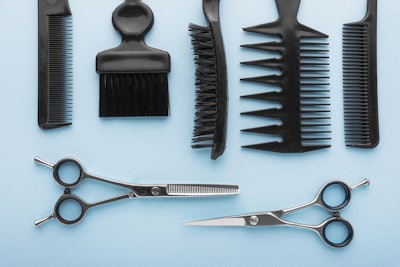
Spring is officially here—from flowers blooming to baby birds chirping, this time of year signifies rebirth and new beginnings. For many, getting organized is how they create a fresh start in both their personal and professional lives. “Keeping your salon free of clutter will allow you easy access to everything you need and will optimize your time,” says Amy Miller, owner of Mighty Tidy Personal Organizing Services in Pasadena, CA. “A clean salon also sends an important message to your employees about what you expect of them, and sets the tone of your business.” Here, she shares organizational tips for improving the day-to-day operations in your salon.
- Practice Good Communication - “Communication between stylists and the front desk is essential to running a successful salon,” Miller points out. “If stylists rely solely on verbal communication to relay sales information to the front desk, oftentimes things will be forgotten or misheard.” She recommends sharing notes with the front desk staff after clients complete their service, so that they can check off any items that were added or discounts that were given in order to accurately charge clients.
- Manage Product Supply - “Eliminating waste is important,” explains Miller. “Waste equals lost money, which can be detrimental to the success of a salon.” Put one person in charge of ordering for the salon, and create a home for every product you carry by purchasing containers, bins or boxes to house items, or designating a specific shelf space. Back stock should be kept in one place so that when shelves are low, you know exactly where extras are and how much you have on hand. “Using a computer inventory system such as QuickBooks can assist you with keeping track of inventory use and purchasing needs,” says Miller. “Try to order on schedule, such as one day a week or on a specific day of the month. This will help control how much money is being spent and assures that you have the right amount of product on hand at any given time.”
-
Track Tool - It happens all too often: Stylists borrow each other’s tools, resulting in misplaced items and hard feelings. For combs and brushes, Miller suggests purchasing a micro engraver, which allows staff to engrave their initials into tools. If you don’t want to engrave your tools, wrap a piece of yarn or string around the handle instead. A label maker is a great way to create tags for blowdryers, curling irons and other corded tools. “Keep a checklist of all tools inside your cabinet or drawer, then at the end of the day make sure they’re all accounted for,” recommends Miller. “Easily identifiable tools will make it easy for stylists to get their tools back, which will prevent unnecessary conflicts among one another.”
-
Keep Client Records - An important aspect of customer service is knowing your client and what he or she likes, which is why stylists (and the front desk) should keep a file on every guest, says Miller. Taking notes after each visit can really improve the service you give clients, and can be kept in the form of index files, electronic notes or notebooks. In addition to color formulas and services, other items that can be valuable to take note of include names of family members, interests, conversation topics and drink choices. “Imagine having your clients sit down in the chair with their favorite soda already waiting for them,” remarks Miller. “Or taking the time to ask how their daughter’s recital went. Little details really set you apart.”
-
Clean the Back Office - Keeping a tidy back office will allow you more time to keep an eye on the front of the studio—it’s much better to allocate your time to employees and clients than spending it looking for lost and misplaced items. “Once a year, clean the back office,” urges Miller. “Get rid of anything that is no longer relevant or in use. Dedicate a few minutes each day to dealing with mail so it doesn’t pile up, and keep receipts in an accordion file arranged by month so that you can easily hand it over to your accountant during tax season.”
[Image: Getty Images]











